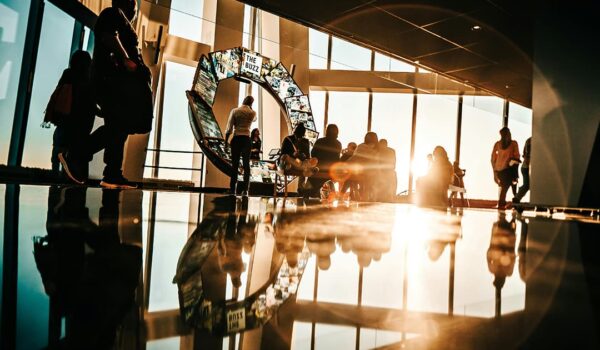Last week was exceptionally busy for the AMS team at the Kennedy Space Center, where the main integration operations are nearing completion. On Monday, AMS-02 underwent a 180° rotation, flipping it upside down to access areas otherwise unreachable. This maneuver allowed the team to perform necessary interventions on Tuesday.
On Wednesday morning, AMS-02 was rotated back to its original position with another 180° turn, and a crucial component was installed: the grapple fixture for the SRMS (Endeavour’s robotic arm). Known as the Flight Releasable Grapple Fixture (FRGF), this stick-shaped projection allows the robotic arm to grasp AMS-02, remove it from the shuttle bay, and transfer it to the ISS arm for installation on the Space Station truss. The grapple fixture for the ISS Canadarm, called the Power Video Grapple Fixture (PVGF), had been installed earlier.
Thursday saw AMS-02 moved from the ELC rotation stand to its final “home” in the SSPF, the Cargo Element Work Stand (CEWS), where it will remain until it is transferred into the canister, the container used for transporting the payload to the launchpad. Moving a 7-ton spectrometer is no small feat. The operation involved around twenty people, including NASA, JCS, KSC staff, and members of the AMS team, and lasted nearly four hours. AMS-02 was hoisted by a hook and a massive frame to the bridge crane, a roof railway running along the highbay walls, and “flew” suspended to the opposite side of the bay.
AMS-02 was then lowered onto another stand where the Weight & Center of Gravity Check was performed. This sensitive check helps refine the AMS-02 computer model used by the robotic arms to precisely manipulate the experiment.
On Friday, the final important installations needed to configure AMS-02 for launch and on-orbit operations were carried out. These included adding a Debris Shield and the Remotely Operated Electrical Umbilical (ROEU), which facilitates electrical connections within the shuttle payload bay.
It was a crucial week for AMS-02, with many significant tasks accomplished. Unfortunately, the STS-133 launch was delayed and subsequently scrubbed due to technical issues currently being resolved by NASA engineers. The Discovery launch is now scheduled no earlier than November 30th. This delay will not affect the STS-134 mission schedule. Despite the disappointment over the delayed STS-133 launch, there was a silver lining: many VIPs who had arrived at KSC for the launch visited AMS-02, including NASA Chief Administrator Charles Bolden and Florida Senator Bill Nelson.
In the coming weeks, the team will continue with software tests and computer upgrades, while the highbay will see the final touches added to the experiment, including the completion of the Multi-Layer Insulation (MLI) blankets covering various components and sub-detectors of the AMS payload.

